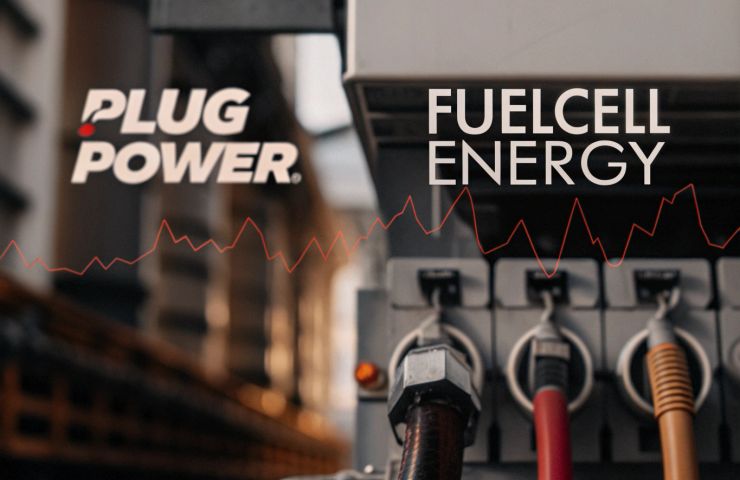
Hydrogen Fuel Cell Stocks Under Pressure: Plug Power and FuelCell Energy Struggle in 2025
July 29, 2025Plug Power Inc. and FuelCell Energy, Inc.—two of the biggest names in the U.S. hydrogen fuel cells space—aren’t having the easiest time in 2025. Their stocks have taken a nosedive, with Plug down around 50% and FuelCell shedding nearly 60% year-over-year as of July 27, 2025. It’s a tough look for the green hydrogen and fuel cell technology sector, and it’s making some investors a little shaky on whether clean hydrogen can truly deliver.
The financials aren’t pretty
To understand what’s going on, take a peek under the hood:
- Plug Power came in hot with a brutal -55% gross margin in Q1 2025. That’s got folks worried about its sky-high cash burn and continuing losses—despite all its ambitious moves in green hydrogen production, fuel cells, and partnerships with major brands like Amazon and Walmart.
- FuelCell Energy hasn’t fared much better. Despite a more focused business (mainly stationary power fuel cells for cities and industrial sites), it’s still losing money. The company’s market cap now sits around $900 million, a steep drop, mostly thanks to high capital costs and tepid demand.
Now, these headline numbers don’t capture the full picture—both companies are still pushing tech boundaries—but let’s face it: Wall Street isn’t known for its patience, and the shine has definitely dulled when it comes to hydrogen equities this year.
Different segments, shared struggles
Even though they both wave the green energy flag, Plug Power and FuelCell Energy play in different sandboxes. Plug’s strategy is wide-ranging—it’s building hydrogen hubs, selling electrolyzers, and targeting mobility and logistics. Think forklifts, delivery trucks, and industrial-grade hydrogen for warehouses.
Meanwhile, FuelCell is more about steady, local electricity generation from its carbonate and solid oxide fuel cell systems—great for powering microgrids and backup systems but tougher to scale quickly. Its tech generates cleaner electricity close to where it’s needed, but commercial traction has been slow going.
Why are investors heading for the exits?
The stock drops aren’t just about the numbers. They speak to a broader skepticism setting in across the hydrogen sector. A few big reasons why investors are nervous right now:
- Manufacturing fuel cell systems and producing clean hydrogen is still expensive—too expensive for widespread adoption just yet.
- Rolling out the infrastructure is taking longer than hoped and costs a fortune.
- Policy support is there, but massive, game-changing purchase orders just haven’t shown up yet.
The result? Investors are weary, some are walking away, and many are waiting to see if the promise of a hydrogen economy can ever live up to the hype.
Two companies, two very different vibes
Curiously, Plug Power and FuelCell Energy don’t really move in lockstep. With a market correlation of just 0.37, their stock prices can diverge quite a bit. Plug’s fortunes tend to swing with news in retail and transportation, while FuelCell rides on government grants and infrastructure contracts.
Still, for all their differences, one thing’s clear: neither has cracked the code to consistent profitability.
What this means for clean hydrogen as a whole
This rough patch isn’t happening in a vacuum. What happens to Plug and FuelCell could ripple across the whole green hydrogen movement. Here’s why it matters:
- If investors keep pulling back, that could discourage new startups from entering the space and slow down innovation.
- Cost-cutting moves—like scaling back operations or laying off skilled workers—could also put a dent in R&D and long-term momentum.
- That said, both companies are still committed to big-picture innovation, and if they can unlock cheaper electrolyzers or better hydrogen storage, there’s still hope for a turnaround.
Government officials keeping an eye on subsidies and performance benchmarks are watching closely. The faith of policymakers and institutional investors might hinge on how these firms bounce back—or don’t.
What’s next: a rebound or a reckoning?
Let’s be real—Plug Power and FuelCell Energy aren’t going anywhere anytime soon. They’ve still got the know-how and industry relationships to stay in the game. But their bumpy ride in 2025 is a stark reminder that being a tech leader doesn’t always translate to profit—or stability.
Some see this stumble as a temporary speed bump, one that’ll be smoothed over as infrastructure catches up and policies strengthen. Others view it as a fundamental red flag, a sign that this sector might struggle unless something big changes—like a collapse in production costs or major consolidation.
For anyone banking on sustainable energy and industrial decarbonization, the next few years will be telling. The trajectory of these two players will help determine just how close—or far—we are from making the hydrogen economy a lasting, profitable reality.



 With over 15 years of reporting hydrogen news, we are your premier source for the latest updates and insights in hydrogen and renewable energy.
With over 15 years of reporting hydrogen news, we are your premier source for the latest updates and insights in hydrogen and renewable energy.
I don’t think PLUG is getting enough credit for all the strategic moves it’s made in 2025. Insider stock buys, the DOE loan, cost cutting measures, Marsh taking a pay cut along with his salary being paid in stock. PLUG just signed a 5+ Billion contract for Hydrogen and the landscape is slowly moving in the right direction with the placement of over 73,000 Electrolyzers with more being sold every day. The biggest concern seems to be waning in regards to PLUG having to buy Hydrogen and sell at a loss, with 3 plants at full TPD this will IMO make a significant difference in the bottom line. Unfortunately far to many pundits are stuck in the mudd on past leadership and business model decisions that didn’t work so PLUG will continue to be faulty or short on earnings, I believe PLUG is much closer to profit than they are getting credit for. These moves along with very good hires will eventually start to turn PLUG around. 3.00 by the end of the year is my assessment.
It’s fascinating to see how the hydrogen fuel cell industry is evolving, but it’s concerning to hear about the struggles facing Plug Power and FuelCell Energy. The promise of hydrogen as a clean energy source seems so close yet so far. I’m curious to see how these companies will adapt to the current pressures and what innovations they might introduce to regain momentum in the market.
It’s interesting to see the challenges Plug Power and FuelCell Energy are facing in 2025. The hydrogen market has so much potential, but these struggles highlight the volatility and risks involved. I’m curious how they plan to pivot or adapt moving forward. Any thoughts on potential recovery strategies?
It’s interesting to see how the hydrogen fuel cell sector is dealing with these challenges in 2025. Plug Power and FuelCell Energy have such potential, but it seems like they’re in a tough spot right now. I wonder what strategies they’ll implement to bounce back. Looking forward to seeing how policy changes and market dynamics play a role in their recovery!
Great insights in this post! It’s fascinating to see how the hydrogen sector is navigating these challenges. I’m particularly curious about how regulatory changes might impact these companies moving forward. Do you think there could be a turnaround for Plug Power and FuelCell Energy in the near future?